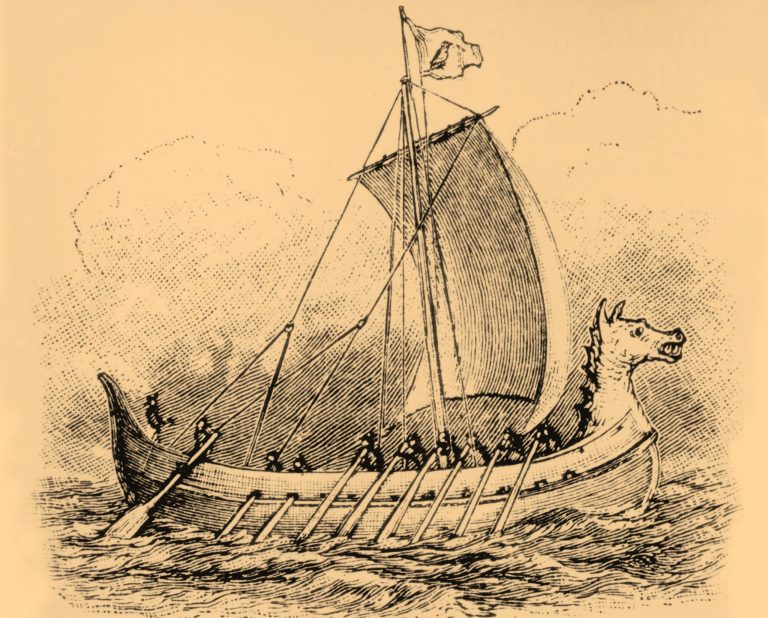[ad_1]
Swedish researchers are hoping to excavate a potentially very informative shipwreck from near Stockholm, one that speaks to an era in the 15th century, when ships were carrying increasingly heavy armaments on board and shipbuilders were in a race to build ever-sturdier vessels.
Located in Landfjärden near Häringe, south of Stockholm, the ship measures 115 feet long and 33 feet wide, and may date as far back as the 1460s. Researchers with Vrak – Museum of Wrecks, in Stockholm, are working hard to see what the ship may reveal.
“The ship’s frame still rises high above the seabed, and in the stern, both the sternpost and rudder remain upright,” said Håkan Altrock, museum curator and project manager overseeing the investigation, in press materials.
The port side rudder from Wreck 5. Photo: Jim Hansson. Courtesy Vrak – Museum of Wrecks, Stockholm.
The ship isn’t lonely down there. Some five wrecks have been discovered in Landfjärden. When discovered, they were thought to be Viking ships, but their exact date and type have been uncertain.
“A year ago, we dated three of the four largest wrecks to the 1600s and 1700s,” Altrock said. “We were also able to link one of them to a historical source from the 17th century.”
The one currently under investigation, referred to as Wreck 5, is particularly significant for the type of construction used to build it. “Unlike the prevailing clinker-built ships of the time, where planks overlap,” Altrock explained, “this vessel was built using the carvel method, with planks laid edge to edge on a frame to create a smooth hull.”

An illustration showing Wreck 5 by Alexander Rauscher. Photo: Jim Hansson.
Carvel construction allowed for the construction of larger and stronger ships, and may have been inspired by the introduction of cannons into maritime battle in the 15th century, since bringing these armaments on board necessitated durable and stable vessels—and hulls strong enough to withstand cannon fire from the enemy.
Wreck 5 is thought to be the oldest of the five, and Landrock calls it “the most intriguing.” There’s some evidence it may have been repaired in the 1480s, and researchers know for sure that the wood used to build it was felled either in Möre, in the Kalmar region, or in eastern Blekinge.

An illustration showing Wreck 5 by Alexander Rauscher. Photo: Jim Hansson.
“We plan to apply for external funding for an excavation,” Altrock said. “This ship represents a fascinating link between medieval and modern shipbuilding. It has the potential to provide us with valuable new insights into an important period in Sweden’s maritime history.” Perhaps to whet funders’ appetites for more, the museum has constructed a neat 3D model of the wreck.
It’s been a busy several years for researchers in this part of the world. This past fall, researchers discovered an archaeologist’s informative (if not always accurate) 150-year-old message in a bottle at Raknehaugen, a burial mound on the outskirts of Oslo. In Norway in 2023, meanwhile, researchers uncovered Scandinavia’s oldest ship burial in Leka, in the northern part of Norway’s Trøndelag County; it is thought to date back more than 1,300 years. At the end of 2019, archaeologists with the Norwegian Institute for Cultural Heritage Research found what appeared to be either a Merovingian or Viking period burial site in Edøy, a tiny island in the archipelago to the west of Trondheim.
[ad_2]
Source link


